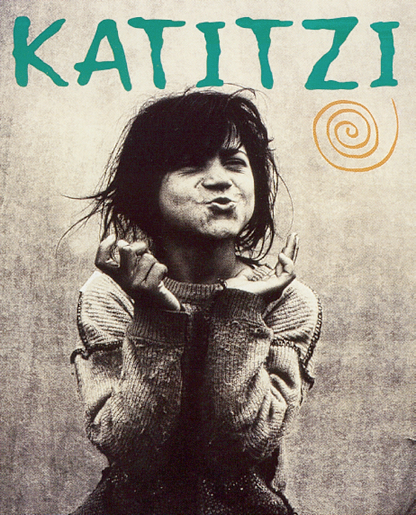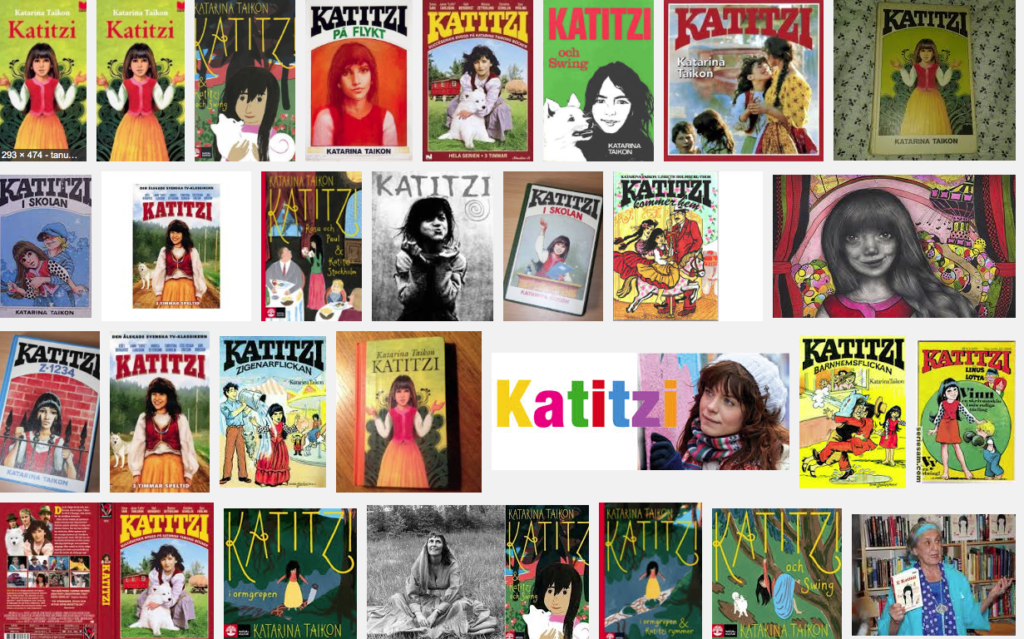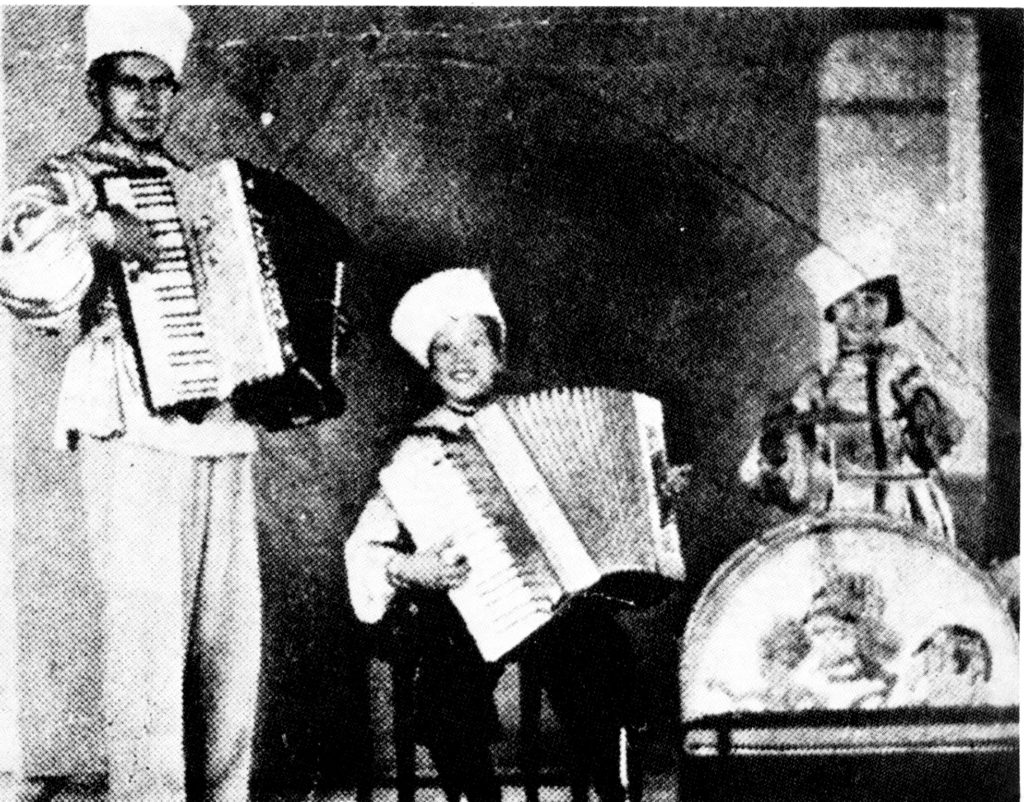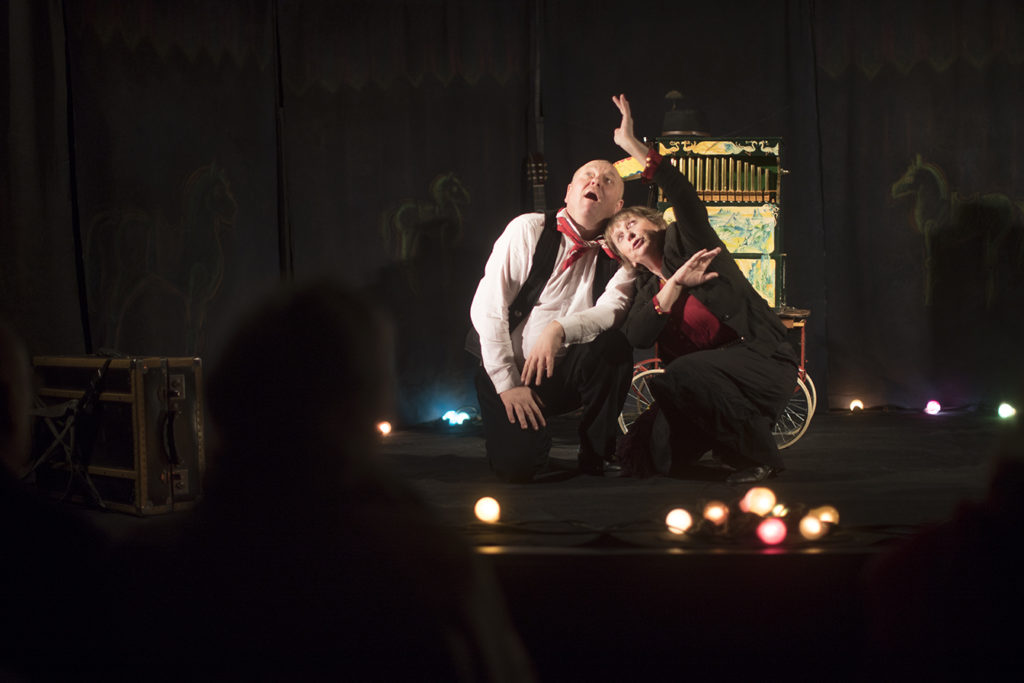For everyone alive longer than 8 years (55 min)

Electrifying narrative theater with a street organ –
The two actors continually change roles to portray the story. We participate through Katitzi’s eyes, experiencing what it’s like to be one of the Roma people. The observant girl is full of life, but is at the same time a stranger in a world she doesn’t understand.
The story of Katitzi’s upbringing is based on Katharina Taikon’s books. These books are being republished in Sweden these days, and so is the biography of Katharine Taikon – a highly esteemed writer of Roma origin who learned to read and write at the age of 26.
Katitzi is Teater Fusentast’s most played performance.

The stories are more or less autobiographical on the Roma family upbringing in Sweden in the 40s and 50s, counting 13 books. Coby Omvlee and Karl Markus Reinert play it out for us in 55 minutes through a serious turn-over of characters and scenes.
What is it like to face intolerance and disrespect just because you are different? Her rich family tradition helped her become a narrator who was able to change this attitude.
Katarina believed that you can only show respect for others when you yourself have experienced that your needs have been met by understanding. You are just as entitled to being treated with worthiness as everyone else, even if you are or feel yourself different from others.

Katarina Taikon and her family
Daddy Taikon was capable of everything that was expected of a Roma man of Caldera decent: Tinify copper boilers, make silver jewelry, dance, play music, and – of course – predict the future. Taikon’s dance troupe was very famous, and the Tsar of Russia gifted him several thoroughbred Arabian horses!
All Romas called him “the great Istvan Taikon” and they all listened to him. But then there was a revolution in Russia. Since the great Istvan Taikon was rich, he could buy fake passports to all his 15 cousins and their families so they could flee to Sweden.

And still he was wealthy and owned seven wagons with tivoli equipment.
Katarina was born just before World War II. Sweden did not want Romas in their land, but could not actively expel them, so they were denied ration cards, staying in the same place for more than 3 weeks, schooling and the right to permanent residence in the hope that they would leave Sweden of their own volition. Taikon’s Tivoli was set on fire three times, and he died impoverished.
Although Katarina used the name “Gypsy” and “Gypsy-like” as an honorable label in Sweden, experience has taught us that in Norway it is better to use the word “Roma” instead.
SVT says about the documentary on her life:
Born in 1932, at a time when antiziganism was rife, Katarina Taikon became one of Sweden’s most popular children’s books authors, but she was also a civil rights activist and her fight for Roma people’s rights earned her the moniker “Sweden’s Martin Luther King”.
… Mohtadi made the documentary together with the journalist Gellert Tamas …
At 26, she learned to read and write,
and then wrote the books that led to
Riksdagen (the parliament) giving the Roma people
the rights they were entitled to.
She died in 1996.
The Katitzi books have been translated into a variety of languages, and a television series and a LP-record with her stories, have been created.
